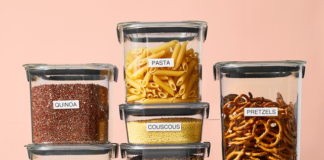
When it comes to wooden floors, the world is truly flat. Meaning that even the rarest woods in the world are now available to install as flooring in your home. While high-end floor covering specialty retailers may have the widest selection, you can find exotic hardwood floors at your big home retailers
So Much to Choose From
The problem with the breadth of today’s selection of exotic hardwood floors is deciding on exactly what’s appropriate for your home. For example, African Wenge is a dark, radiant beauty that’s simply stunning in flooring, furniture and cabinets, but is it appropriate for your center-hall colonial? Probably not.
Think about your home in terms of the period that it was built, (or the period that it recreates.) For example a New England saltbox is picture perfect finished with wide plank, pegged, heart pine floors. Whereas a sleek, modern Pacific Coast cliffhanger would be dazzling with the Wenge, or Bloodwood, or any of the more vibrant woods. That’s not to say that you must bound by the restrictions of the period, but it helps to know what the expectations are – especially when reselling a home.
Here’s a story that illustrates that: When selling our 1840 Federal, we had renovated the upstairs very faithfully to the period (Douglas fir floors), with the exception of a fabulous slate and glass master bath, that was truly Architectural Digest spectacular. One couple wrinkled their noses and told us that they expected the baths to be period-perfect! Gee, I wonder if they would’ve preferred a chamber pot?
Origin of the Species
Let’s look at some of the many woods that are available for exotic hardwood floors, with their origin and a brief description of each. There are doubtless other species that aren’t listed here, but this covers many of the more popular exotic hardwood species available today.
Amendoin: South American, tannish to warm orange, clear to medium grained with brown and red highlights
Ash: North American, not exotic, but rarely used in flooring, clearish white to blond with contrasting light brown grain (look at a baseball bat)
Australian Cypress: Australia, peppered with lots of knots, warm amber with contrasting brown knots
Bloodwood: Brazil, deep rich reddish, orange, brownish – warm and truly stunning
Bubinga: Africa, reddish brown with contrasting red-to purple vertical grain lines – gorgeous
Brazilian Cherry: South America, similar to American Cherry, but slightly more tan/orange. Deepens to reddish brown.
Brazilian Teak: South America, an oily brownish tan wood, with slightly contrasting grain.
Brazilian Walnut: Brazil, A lovely alternative to American walnut, which is only available in recycled material, stable medium to rich browns
Bolivian Rosewood: South America, rosy, rich with contrasting graining in reddish brown
Doussie: Africa, golden flax to dark brown, with interesting contrasting grains in brownish orange, darkens over time
Hickory: North America, Light white to medium browns with clear delineations in the same plank, unusual and elegant, An American exotic
Lapacho – Patagonian Walnut: South America, golden, medium to darker brown, can have green, darkens to warm golden amber brown
Patagonian Rosewood – Agnico: South America, wide range of colors and tones from lights to reds, orange, brown even black, changes over time to deep red brown hue.
Padouk – Africa: Deep reds, orange hues and browns, changes dramatically to darker reds and deep brown over time, stunning
Santos Mahogany: South America, Very stable, lovely graining, orange, tan, amber, even purplish, with modest darkening over time
Tigerwood: South America, lively contrasting reddish grains on this golden to orange wood, deepens over time to warm reddish brown
Wenge: Africa, dark chocolate to warm yellow with vivid dark contrasting graining, already dark, Wenge deepens to a deep, warm brown in time
Ecological Considerations
While some of these woods will come as solid flooring, more likely you’ll find exotics as engineered flooring. This is good for a few reasons. First, it actually uses lees of surface wood, which is only a top veneer over a plywood base, using less of the exotic wood, thus stretching the resource further. Second, some of these exotics exhibit less stable characteristics, so when packaged in an engineered panel, these less stable tendencies are mitigated by the stable plywood base.
Also ask your flooring supplier if these exotics are harvested on a sustainable basis. Are they FSC certified? Many wood manufacturers are willingly embracing new ecological guidelines as a way to bolster their sales, by selling a responsibly manufactured product.
Finishing Your Exotic Hardwood Floors
Be sure to check with your retailer if you are planning to finish your unfinished exotic material, as some of the woods present problems with traditional finishes, such as Brazilian Teak. You may have to use oil based finishing products, or even wax-based products depending on the species.
Also, we’d recommend avoiding darker stains, to let the beauty of the grain and pattern to show through. Most woods darken over time – some dramatically – so you don’t want to create muddy-finish floor. Especially if it could be a regal dark and deep natural tone, without any help from a stain.
Also, we’d recommend a softer, satin or matte finish to allow the grain to show, rather reflect like a mirror. A semi gloss will give you a nice sheen with making it look like an ice rink.
Finally, be sure to purchase all your molding pieces at the same time, and from the same manufacturer if possible. These pieces include bullnoses, shoe moldings, transitions, and quarter round – all those little pieces that complete a hardwood floor installation. Best to use the same wood, rather than introduce a foreign species into your exotic masterpiece.






































